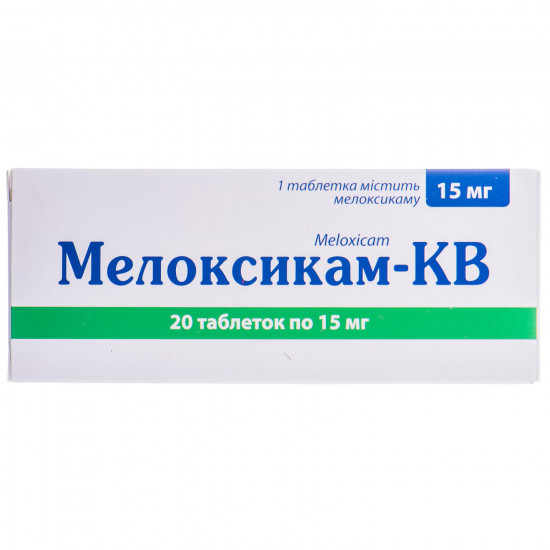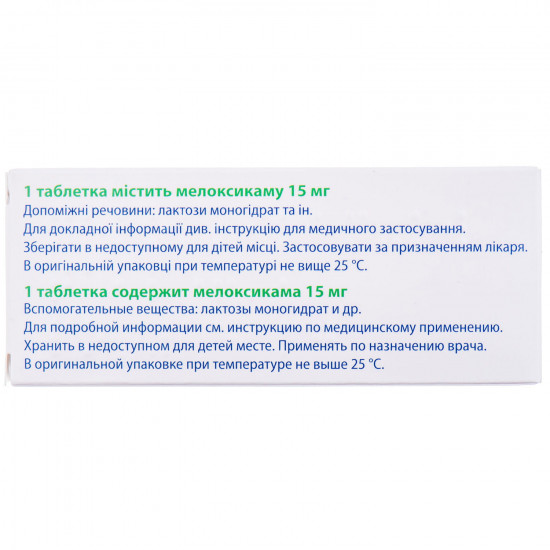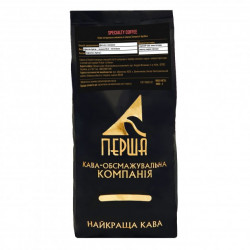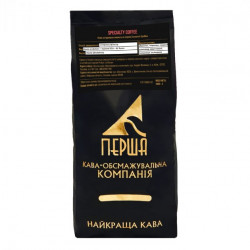



- Stock: In Stock
- Model: 183552
0% Customers recommend this product
-
5 Awesome0%
-
4 Great0%
-
3 Average0%
-
2 Bad0%
-
1 Poor0%
Reviews Over Meloksikam-KV tab. of 15 mg No. 20
- (0)
Total Reviews (0)
click here write review to add review for this product.
Report this review.
Description
Pharmacological properties
Pharmacodynamics. anti-inflammatory, analgeziruyushchy, febrifuge. the mechanism of action is caused by mainly selection inhibition tsog-2 that leads to oppression of biosynthesis of pro-inflammatory prostaglandins in the inflammation center. thanks to low affinity to tsog-1, medicament in therapeutic doses has no negative impact on biosynthesis of cytoprotective prostaglandins in a GIT and kidneys and also does not suppress functional activity of thrombocytes. is hondroneytralny drug, does not influence proteoglycan synthesis by chondrocytes of an articulate cartilage.
Pharmacokinetics. At intake to meloksika it is well absorbed in a GIT, the bioavailability is 89%. The concomitant use of food does not influence medicament absorption. The C max in blood is reached in 5–6 h. Stable therapeutic concentration in blood is reached in 3–5 days after the beginning of administration of drug. Linking with proteins of blood plasma makes more than 99%. Is exposed to biotransformation in a liver, mainly by oxidation with formation of four inactive metabolites. The main role in metabolism of a meloksikam is played by CYP enzymes 2CP and CYP 3A4 and also peroxidase. Drug distribution volume low — on average 11 l, plasma clearance — 8 ml/min. The t ½ makes about 20 h that allows to accept it 1 time a day. Discharge comes kidneys and intestines in equal proportions from an organism; 5% of a daily dose are excreted in not changed look by intestines. Drug passes through gistogematichesky barriers, well gets into synovial fluid where its concentration makes 50% of level in blood plasma.
byAt elderly people observes only insignificant increase in T ½ medicament and decrease in plasma clearance (especially at women).
bynoted significant change of pharmacokinetics of a meloksikam and increase in risk of development of side effects at use of medicament for patients with a liver or moderate renal failure (clearance of creatinine — 20–40 ml/min.).
Indication
Inflammatory and degenerative diseases of joints (arthrosis, an osteoarthritis), the pseudorheumatism ankylosing a spondylarthritis.
Use
to Adults and teenagers is aged more senior than 15 years inside, at meal time, washing down with a small amount of liquid. the mode of dosing is set individually taking into account intensity of inflammatory process and expressiveness of a pain syndrome.
In a pseudorheumatism and an ankylosing spondylitis medicament is usually appointed on 15 mg of 1 times a day, at achievement of positive therapeutic effect the dose can be reduced to 7.5 mg of 1 times a day.
In an osteoarthrosis the daily dose makes 7.5 mg, in need of it raise to 15 mg/days
Highest daily dose makes 15 mg.
treatment should begin withAt persons with the increased risk of emergence of side effects with a dose 7.5 mg/days
At the patients with a heavy renal failure who are on a hemodialysis, the dose should not exceed 7.5 mg/days
At patients with a moderate renal failure (clearance of creatinine of 25 ml/min.) and also with clinically not progressing cirrhosis of a dose decline it is not required from patients.
to Children aged up to 15 years medicament is not appointed.
Contraindication
Ulcer of stomach or duodenum in an aggravation phase, an inflammatory disease of a large intestine in an active form (Crohn's disease or ulcer colitis), the profound abnormal liver functions, a heavy renal failure (without carrying out a hemodialysis), manifest gastrointestinal bleeding, recent cerebrovascular bleeding or other disorders with bleedings, heavy uncontrollable heart failure, the increased individual sensitivity to a meloksikam and others npvp and/or to medicament components, the period of pregnancy and feeding by a breast, age up to 15 years. to meloksikam-apartment it is contraindicated in postoperative pain at aortocoronary shunting.
Side effects
from digestive system: dyspepsia, nausea, vomiting, abdominal pain, constipation, meteorism, diarrhea; seldom — an esophagitis, stomatitis, an eructation, GIT erosive cankers, the latent or macroscopically visible gastrointestinal bleeding, tranzitorny changes of function of a liver (increase in level of hepatic transaminases or bilirubin); in some cases — perforation of intestines, colitis.
from central nervous system and peripheral nervous system: headache; seldom — dizziness, sonitus, drowsiness; in some cases — change of mood, orientation disturbance.
from a cardiovascular system: hypostases, it is rare — increase in the ABP, tachycardia.
from an urinary system: seldom — changes of laboratory indicators of function of kidneys (increase in level of creatinine and/or urea in blood); in some cases — an acute renal failure.
from the system of a hemopoiesis: seldom — anemia, a leukopenia, thrombocytopenia.
Dermatological reactions: itching, rash; seldom — a small tortoiseshell; in some cases — a photosensitization, bullous reactions, a multiformny erythema, Stephens's syndrome — Johnson, a toxic epidermal necrolysis.
Allergic reactions: in some cases — a Quincke's disease, reactions of immediate hypersensitivity (including anaphylactic and anaphylactoid), asthmatic attacks.
Other: in some cases — conjunctivitis, disorders of vision (including illegibility).
Special instructions appointWith care by
to the patients having ulcer of stomach or duodenum in the anamnesis and also the persons receiving anticoagulating therapy. in case of developing of a round ulcer or gastrointestinal bleeding, medicament should be cancelled. should appoint by
With care medicament to patients of advanced age with abnormal liver functions, kidneys and heart and also the exhausted and weakened patient.
At emergence of changes of indicators of function of a liver treatment meloksikamy should stop and conduct control laboratory researches.
NPVP inhibit synthesis of the renal prostaglandins participating in maintenance of normal level of a renal blood-groove. Therefore when assigning NPVP to patients with a reduced renal blood-groove or OCK there is a risk of development of a decompensation of kidneys. In rare instances medicaments of this group can cause interstitial nephrite, a glomerulonephritis, necrosis of marrow of kidneys or a nephrotic syndrome. Patients need to consider potential negative impact of NPVP on kidneys when assigning a meloksikam with dehydration, stagnant heart failure, cirrhosis, a nephrotic syndrome, heavy renal failures and also to the persons which are accepting diuretics, who transferred the surgery which led to a hypovolemia. At patients of these categories from an initiation of treatment meloksikamy it is necessary to control a diuresis and function of kidneys.
risk of emergence of the serious cardiovascular trombotichesky phenomena, a myocardial infarction and stroke which can be lethal can raiseNPVP. At increase in duration of treatment this risk can increase. Such risk can increase at patients with cardiovascular diseases or with risk factors of developing such diseases.
Because of possible emergence of side effects on skin and mucous membranes should pay special attention to emergence of the corresponding symptoms. At emergence of side effects the medicament treatment should be stopped.
Use during pregnancy and feeding by a breast. Drug is contraindicated during pregnancy and feeding by a breast.
Children. Drug is contraindicated to children aged up to 15 years.
Ability to influence the speed of reactions at control of vehicles or work with other mechanisms. At emergence of by-effects from central nervous system (drowsiness, etc.), an organ of sight to patients it is necessary to refuse control of vehicles or work with mechanisms.
Interaction
At simultaneous use of a meloksikam with other npvp the risk of developing erosive cankers and bleedings in a GIT increases.
Should avoid the combined use of medicament with anticoagulants, trombolitika, antiagregant in connection with increase in risk of developing bleedings.
At simultaneous use with diuretics the risk of development of OPN at patients with dehydration in this connection the patients applying to meloksika in combination with diuretics have to receive enough liquid increases. This category of patients before therapy meloksikamy needs to investigate function of kidneys.
Meloksikam can cause a delay of sodium, potassium, liquid therefore at predisposed patients the risk of progressing of heart failure and AG increases.
Meloksikam reduces efficiency of blockers of beta adrenoceptors, APF inhibitors, vazodilatator, diuretics, intrauterine contraceptives.
Meloksikam can strengthen a methotrexate gematotoksichnost in this connection at their simultaneous use the laboratory control of peripheral blood is necessary. Meloksikam increases nephrotoxicity of cyclosporine therefore at their combined use it is necessary to control function of kidneys.
byAt simultaneous use of a meloksikam with medicaments of lithium notes increase in level of lithium in blood plasma. Colestyraminum accelerates removal of a meloksikam.
Perhaps pharmacokinetic interaction of a meloksikam with hypoglycemic medicaments and also the means modifying activity or which are metabolized by means of cytochrome 2C9 or cytochrome 3A4.
bydid not reveal clinically significant interaction with antacids, Cimetidinum, digoxin and furosemide.
Overdosephenomena described in the section side effects Are possible
: dyspepsia, nausea, vomiting, abdominal pain, headache, hypostases, itching, rash.
Treatment: medicament withdrawal, washing of a GIT, symptomatic therapy. There is no specific antidote.
Storage conditions
In original packing at a temperature not above 25 °C.
Specifications
| Characteristics | |
| Active ingredients | Meloksikam |
| Amount of active ingredient | 15 mg |
| Applicant | Kiev vitamin plant |
| Code of automatic telephone exchange | M01AC06 Meloksikam |
| Interaction with food | In time |
| Light sensitivity | Not sensitive |
| Market status | Generic-generic |
| Origin | Chemical |
| Prescription status | According to the prescription |
| Primary packing | blister |
| Producer | KIEV VITAMIN PLANT OF THE JOINT-STOCK COMPANY |
| Quantity in packing | 20 tablets (2 blisters on 10 pieces) |
| Release form | tablets for internal use |
| Route of administration | Oral |
| Sign | Domestic |
| Storage temperature | from 5 °C to 25 °C |
| Trade name | Meloksikam |




















